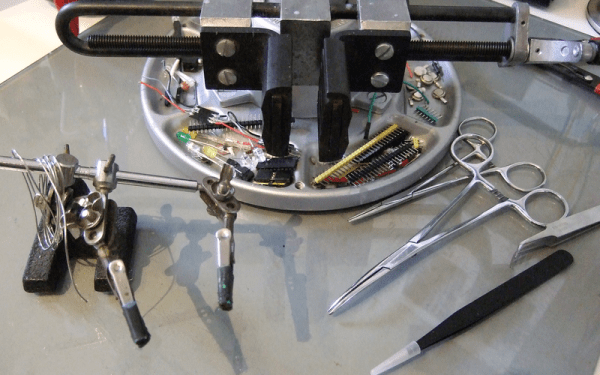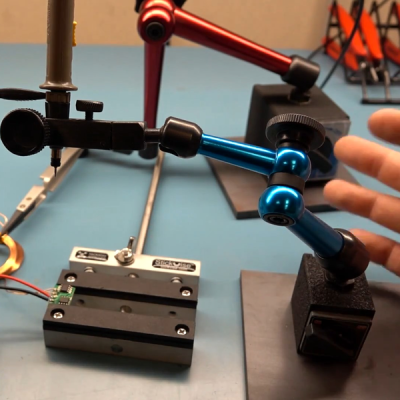We’re not so much fans of James Bond as we are of Q, the hacker who supplies him with such wonderful things. There is a challenger to Q’s crown, [Naomi Wu] — code name [SexyCyborg] — built an epic gadget called the Pi Palette which hides a Linux laptop inside of a cosmetics case.
You can see the covert mode of the Pi Palette below. It resembles a clamshell cosmetics case with the makeup and applicator in the base and a mirror on the underside of the flip-up lid. The mirror hides an LCD screen in the portrait orientation, as well as a Raspberry Pi 3 running Kali Linux.
The base of the case includes a portable battery beneath the wireless keyboard/touchpad — both of which are revealed when the cosmetics tray is removed. An inductive charger is connected to the battery and [Naomi] built a base station which the Pi Palette sits in for wireless charging.
She envisions this as a covert penetration testing. For that, the Pi Palette needs the ability to put the WiFi dongle into promiscuous mode. She wired in a dual dip-switch package and really went the extra mile to design it into the case. The fit and finish of that switch is just one tiny detail the illustrates the care taken with the entire project. With such a beautiful final project it’s no wonder she took to the streets to show it off. Check that out, as well as the build process, in the video after the break.








 Our own helping hands, purchased for $5 from a surplus shop, have seen nearly twenty years of use now. About ten years ago, I heat-shrinked and plasti-dipped the jaws, and since then they do less damage to cable insulation. The clips kept coming loose, but that was fixed with a little epoxy. I never used the magnifying glass, and by removing it I bought some more sliding room for the jaws, which was an easy win. The base has a “non-slip” coating of Shoe-Goo that keeps it in place on the desk. Cork might be classier.
Our own helping hands, purchased for $5 from a surplus shop, have seen nearly twenty years of use now. About ten years ago, I heat-shrinked and plasti-dipped the jaws, and since then they do less damage to cable insulation. The clips kept coming loose, but that was fixed with a little epoxy. I never used the magnifying glass, and by removing it I bought some more sliding room for the jaws, which was an easy win. The base has a “non-slip” coating of Shoe-Goo that keeps it in place on the desk. Cork might be classier.











